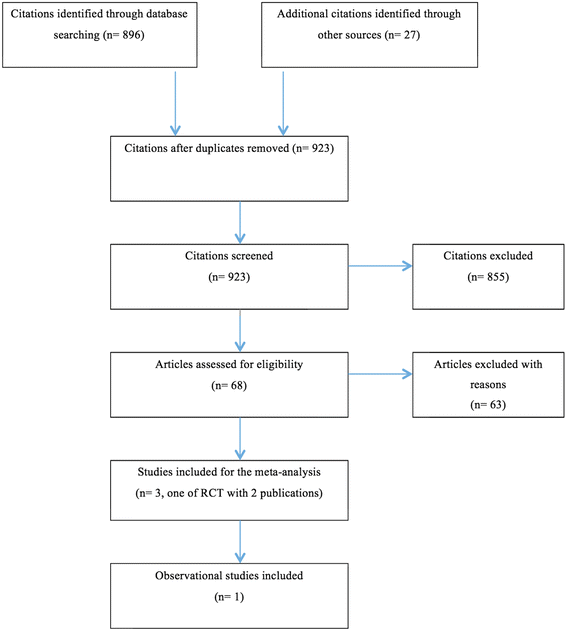Age of introduction of first complementary feeding for infants: a systematic review
- PMID: 26328549
- PMCID: PMC4557230
- DOI: 10.1186/s12887-015-0409-5
Age of introduction of first complementary feeding for infants: a systematic review
Abstract
Background: Despite a World Health Organization recommendation for exclusive breastfeeding of all full-term infants to 6 months of age, it is not clear what the health implications may be. Breast milk alone may not meet the nutrition needs for all growing infants, leaving them at risk for deficiencies. The objective of this study was to investigate the relationship between moderate (4 months) versus late (6 months) introduction of complementary foods to the full-term breastfed infant on iron status and growth.
Methods: An electronic search of peer-reviewed and gray-literature was conducted for randomized control trials (RCTs) and observational studies related to the timing of introduction of complementary foods. Iron status and growth data from the relevant RCTs were analyzed using RevMan 5.2.11.
Results: Three RCTs and one observational study met the inclusion criteria. Meta-analysis showed significantly higher hemoglobin levels in infants fed solids at 4 months versus those fed solids at 6 months in developing countries [mean difference [MD]: 5.0 g/L; 95% CI: 1.5, 8.5 g/L; P = 0.005]. Meta-analysis also showed higher serum ferritin levels in the 4-month group in both developed and developing countries [MD: 26.0 μg/L; 95% CI: -0.1, 52.1 μg/L, P = 0.050], [MD: 18.9 μg/L; 95% CI: 0.7, 37.1 μg/L, P = 0.040]. Short follow-up periods and small sample sizes of the included studies were the major limitations.
Conclusions: RCT evidence suggests the rate of iron deficiency anemia in breastfed infants could be positively altered by introduction of solids at 4 months.
Figures







References
-
- World Health Organization. Infant and young child feeding. 2010. http://www.who.int/mediacentre/factsheets/fs342/en/. Accessed November 17 2013.
Publication types
MeSH terms
Substances
LinkOut - more resources
Full Text Sources
Other Literature Sources
Medical
Miscellaneous

